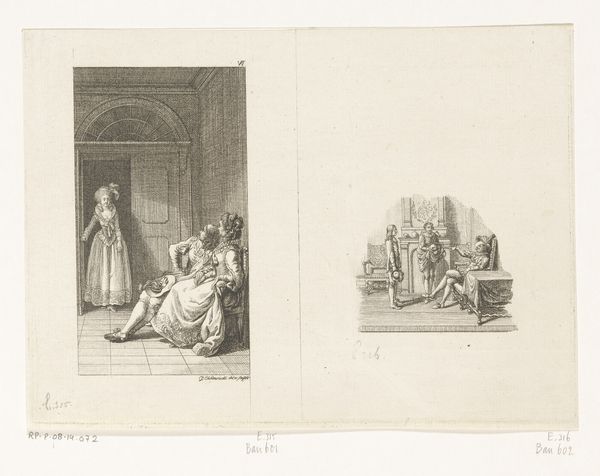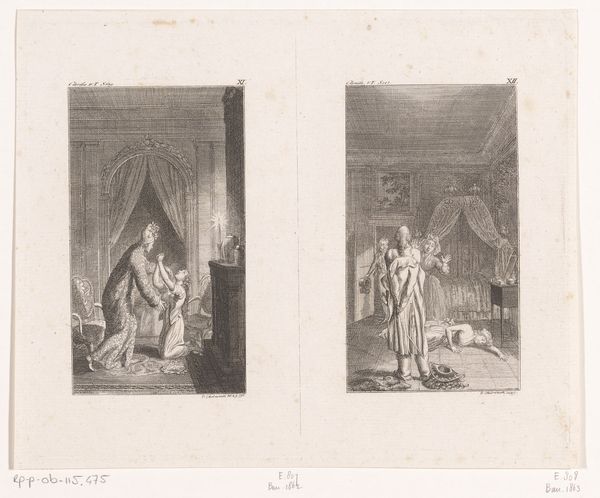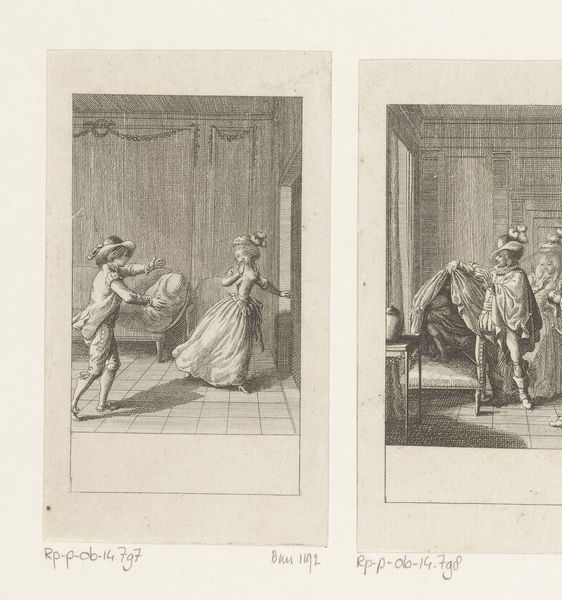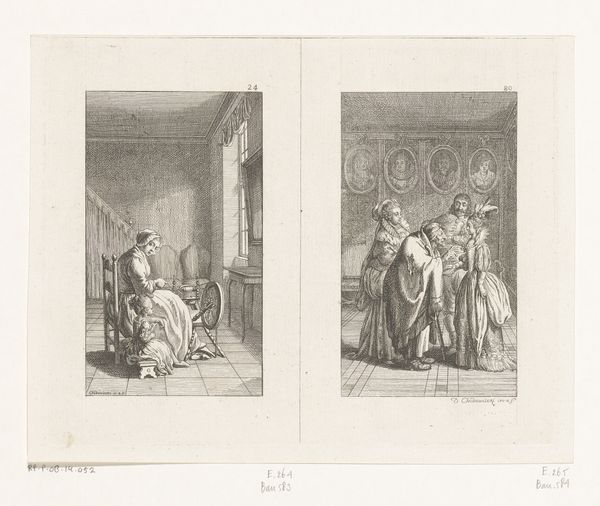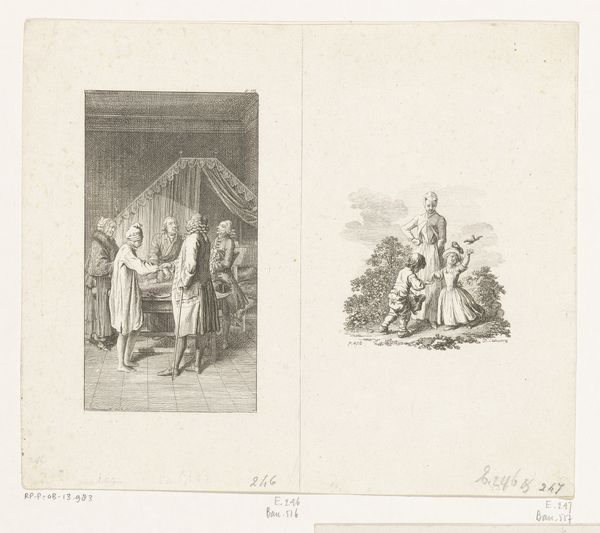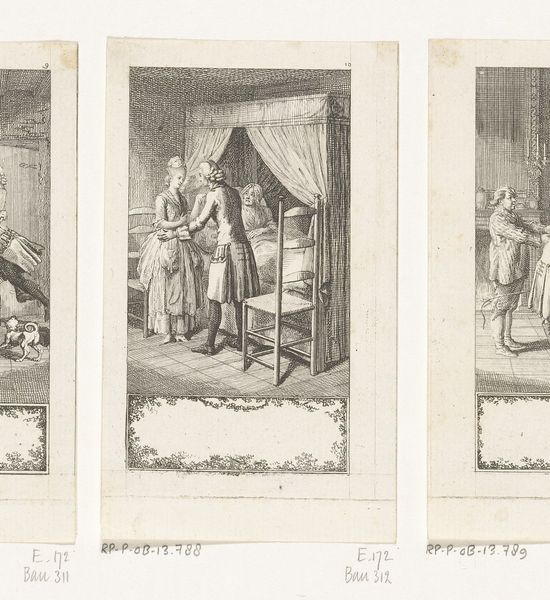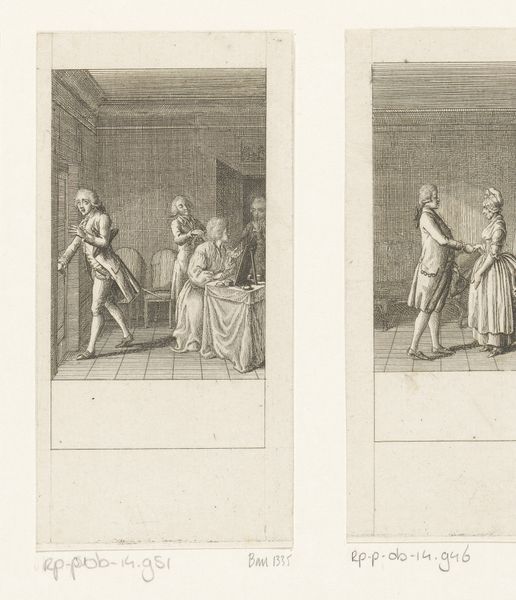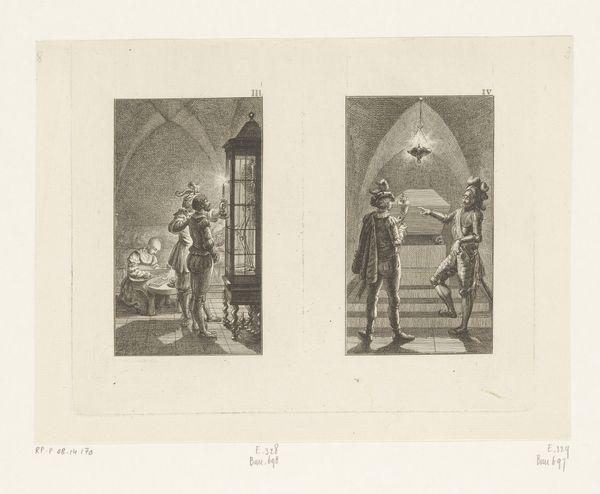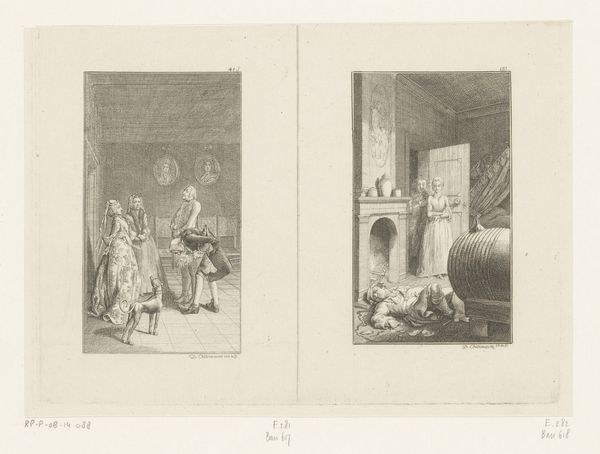
Gil Blas omhelst Estella en vignet met Gil Blas en de aartsbisschop van Granada 1779
0:00
0:00
danielnikolauschodowiecki
Rijksmuseum
drawing, print, etching, engraving
#
portrait
#
pencil drawn
#
drawing
#
narrative-art
# print
#
etching
#
pencil sketch
#
figuration
#
classicism
#
line
#
genre-painting
#
history-painting
#
engraving
Dimensions: height 158 mm, width 214 mm
Copyright: Rijks Museum: Open Domain
Editor: This is "Gil Blas Embraces Estella" from 1779, by Daniel Nikolaus Chodowiecki. It's an etching, and the composition with its dual scenes feels quite theatrical, almost like stills from a play. What historical contexts are relevant here? Curator: The choice of subject is deeply rooted in the literary tastes of the late 18th century. "Gil Blas" was an extremely popular picaresque novel. Chodowiecki, like many artists, drew inspiration from its social commentary. This print, as a readily reproducible image, amplified the novel's reach, turning social satire into widely consumed visual culture. Who was being depicted and how mattered significantly. Why do you think Chodowiecki chose these particular scenes? Editor: I guess it emphasizes social mobility, and maybe critiques class structures in pre-revolutionary Europe? One scene has an intimate embrace; the other has someone meeting with a bishop? Curator: Exactly. Chodowiecki highlights intimate, emotional moments alongside instances of social maneuvering. He lays bare the relationship between private desire and public performance. How might the viewers interpret it, engaging with power structures? Consider how they viewed social climbing within the Church. Did they critique such actions, and were those ideas accepted? Editor: So the artwork serves almost like a visual editorial, sparking social dialogue about the elite? Curator: Precisely! It implicates the viewer, prompting them to consider their own position within the very societal structures it depicts. The popularity of prints like this helped fuel critical discourse. Considering the socio-political climate, especially the Enlightenment ideals circulating, it questions institutional authority. Is that how you now view the narrative? Editor: I see it very differently now. The print isn't just a pretty scene, it's actually making an argument about power. It also provides commentary about class relations through imagery for wide audiences to absorb, understand, and apply to society! Curator: That's it. Understanding the cultural backdrop illuminates how art can participate in shaping public consciousness.
Comments
No comments
Be the first to comment and join the conversation on the ultimate creative platform.

